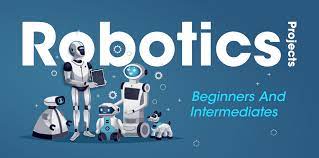Introduction
Robotics is a rapidly growing field that has the potential to revolutionize the way we live and work. From manufacturing to healthcare, robotics is being used in a wide range of industries to improve efficiency, accuracy, and safety. In this article, we will delve into the history of robotics, current advancements, and future possibilities in the field.
The History of Robotics
The history of robotics can be traced back to the ancient world, where simple machines were used to automate tasks. However, it wasn’t until the 20th century that the term “robot” was coined by Czech playwright Karel Čapek in his 1920 play “Rossum’s Universal Robots.” The word “robot” comes from the Czech word “robota,” which means “forced labor.”
In the 1950s and 60s, robotics began to gain momentum in the manufacturing industry. The first industrial robot, called Unimate, was developed by George Devol and installed at a General Motors factory in 1961. This robot was able to perform simple tasks such as welding and assembly.
The 1970s and 80s saw the development of more advanced robots, such as the Puma robot developed by Unimation, which was able to perform tasks such as drilling and painting. These robots were controlled by computers, which allowed for more precise and complex movements.
Current Advancements in Robotics
Today, robotics is being used in a wide range of industries, including manufacturing, healthcare, and transportation. One of the most significant advancements in robotics is the development of collaborative robots, also known as “cobots.” These robots are designed to work alongside humans, rather than replacing them. This allows for greater flexibility in the manufacturing process and allows humans to focus on more complex tasks.
Another advancement in robotics is the development of autonomous robots, which are able to perform tasks without human intervention. These robots are being used in industries such as agriculture and mining, where they are able to perform tasks such as planting and drilling with greater efficiency and accuracy.
In the field of healthcare, robots are being used to assist with surgeries and perform other medical procedures. These robots are able to make incisions with greater precision and accuracy, which reduces the risk of complications and improves recovery times.
Future Possibilities in Robotics
As technology continues to advance, there are many possibilities for the future of robotics. One area of research is the development of soft robotics, which uses flexible materials to create robots that are able to move and adapt to their environment. This has the potential to revolutionize the field of robotics, as these robots will be able to perform tasks that are not currently possible with traditional robots.
Another area of research is the development of robots that are able to learn and adapt to their environment. This is known as “machine learning,” and it allows robots to improve their performance over time. This has the potential to make robots more efficient and able to perform a wider range of tasks.
In the future, robots may also be used to explore other planets and assist with space missions. NASA is currently developing robots that are able to perform tasks such as drilling and sample collection on other planets.
Conclusion
Robotics is a rapidly growing field that has the potential to revolutionize the way we live and work. From manufacturing to healthcare, robots are being used in a wide range of industries to improve efficiency, accuracy, and safety. In the future, we can expect to see even more advancements in robotics, as technology continues to advance. As we move forward to robotics.
thanks for reading our article. this is write by techrapro.com best tech site.




